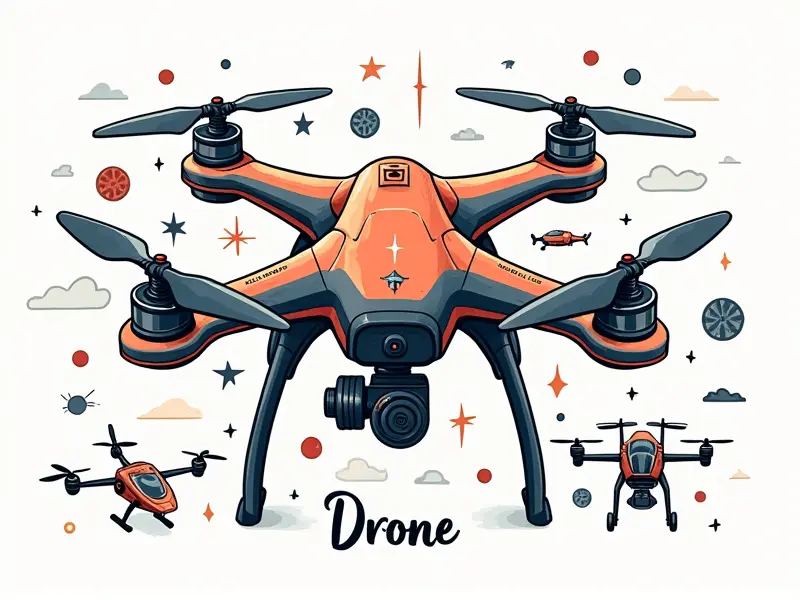Quadcopter stability tips?

Top Tips to Improve Quadcopter Stability
Mastering the stability of your quadcopter is crucial for achieving smooth and controlled flights. Whether you're a beginner or an experienced pilot, understanding how to maintain perfect balance and tweak settings can significantly enhance your flying experience.
Maintaining Proper Balance
- Center of Gravity: Ensure the center of gravity is correctly positioned for optimal stability. This often means balancing the weight distribution evenly across all arms.
- Battery Placement: Place the battery close to the flight controller and motors to minimize vibrations and improve balance.
Mastering Quadcopter Stability in Flight
Flying a quadcopter smoothly requires practice, patience, and an understanding of how your drone operates. Here are some key strategies:
Understanding Propeller Dynamics
- Balanced Propellers: Make sure all propellers are perfectly balanced to reduce vibrations.
- Mismatched Motors: Avoid using mismatched motors, as this can cause instability and affect flight performance.
Adjusting PID Settings
- PID Tuning: Fine-tune the Proportional (P), Integral (I), and Derivative (D) settings in your flight controller to achieve better stability.
- Auto-Tuning: Utilize auto-tuning features if available, but be prepared to manually adjust as needed for optimal performance.
Common Mistakes Affecting Quadcopter Stability
Making mistakes is part of the learning process. Here are some common errors that can impact your quadcopter's stability:
Inadequate Maintenance
- Lubrication: Neglecting to lubricate moving parts, such as servos and gears, can lead to increased friction and instability.
- Battery Condition: Using old or poorly maintained batteries can cause erratic behavior during flight.
Poor Assembly Techniques
- Loose Screws: Ensuring all screws are tightened properly is crucial for maintaining structural integrity and stability.
- Inconsistent Build Quality: Using components from different manufacturers can lead to inconsistencies that affect performance.
How to Maintain Perfect Quadcopter Balance
Maintaining balance involves a combination of hardware adjustments and software tweaks. Here’s how you can achieve it:
Balancing the Frame
- Weighing Components: Use scales to ensure each arm is equally weighted.
- Adjusting Arm Lengths: Fine-tune arm lengths if necessary, but be cautious not to alter structural integrity.
Tuning the Flight Controller
- Leveling: Ensure your flight controller is perfectly level before calibrating.
- Magnetometer Calibration: Regularly recalibrate the magnetometer to ensure accurate heading data.
Easy Tweaks for More Stable Quadcopters
Sometimes, minor adjustments can make a big difference in stability. Here are some quick fixes you can try:
Balancing Propellers
- Digital Balancer Tools: Use digital balancers to ensure propellers are perfectly balanced.
- Manual Adjustment: If a tool isn’t available, manually balance each propeller for precision.
Adjusting Motor Mounts
- Alignment: Ensure motor mounts are aligned correctly to prevent vibrations and wobbles.
- Tightening Screws: Double-check that all screws are tight, but not over-tightened which can cause damage.
Secrets to Smooth Quadcopter Flying
Achieving smooth flights requires a combination of hardware and software optimization. Here’s how you can get there:
Optimizing Propeller Pitch
- Pitch Adjustment: Adjust propeller pitch to match your flight style and environmental conditions.
- Trial and Error: Experiment with different pitches to find the optimal balance for stability.
Using High-Quality Components
- Better Motors: Invest in high-quality motors that provide consistent performance.
- Advanced Flight Controllers: Upgrade to advanced flight controllers with more features and better stability algorithms.
Why Your Quadcopter Is Shaky and How to Fix It
If your quadcopter is shaky, it’s important to diagnose the issue correctly. Here are some common causes and solutions:
Vibration Issues
- Balanced Propellers: Check if propellers are balanced.
- Mechanical Loose Parts: Inspect for any loose screws or parts causing vibrations.
Software Malfunctions
- PID Settings: Review and adjust PID settings if they seem off.
- Firmware Updates: Ensure your flight controller firmware is up-to-date for the latest stability improvements.
Ultimate Guide: Stabilizing Your RC Quadcopter
This comprehensive guide covers everything you need to know about stabilizing your quadcopter. From hardware adjustments to software tweaks, follow these steps to achieve rock-solid stability:
Step-by-Step Process
- Initial Setup: Start with a clean slate by ensuring all components are correctly installed and balanced.
- Tuning PID Settings: Fine-tune your flight controller's PID settings for optimal performance.
- Maintenance Checks: Regularly inspect and maintain your quadcopter to prevent issues before they arise.
Simple Steps to Perfect Quadcopter Stability
Achieving perfect stability doesn’t have to be complicated. Follow these simple steps for a smoother flying experience:
Balancing the Frame
- Weigh Each Arm: Use scales to ensure each arm is equally weighted.
- Adjust as Needed: Fine-tune any discrepancies in weight distribution.
Tuning PID Settings
- Start with Auto-Tuning: Begin by using the auto-tuning feature for a baseline setting.
- Manual Adjustments: Fine-tune manually based on flight performance and stability.
Conclusion
Stabilizing your quadcopter is crucial for achieving smooth flights. By following these tips and tricks, you can ensure that your quadcopter performs at its best, providing a more enjoyable flying experience.

